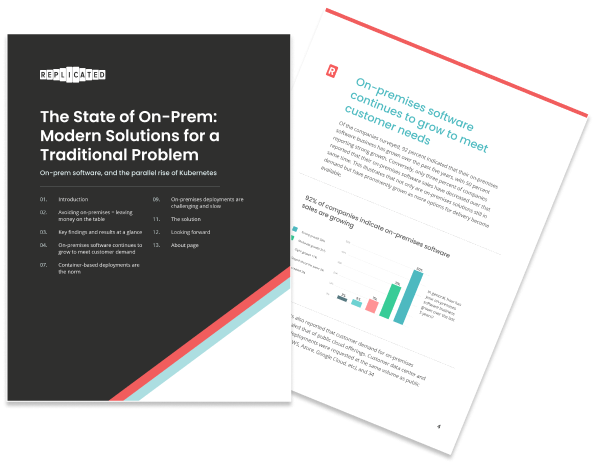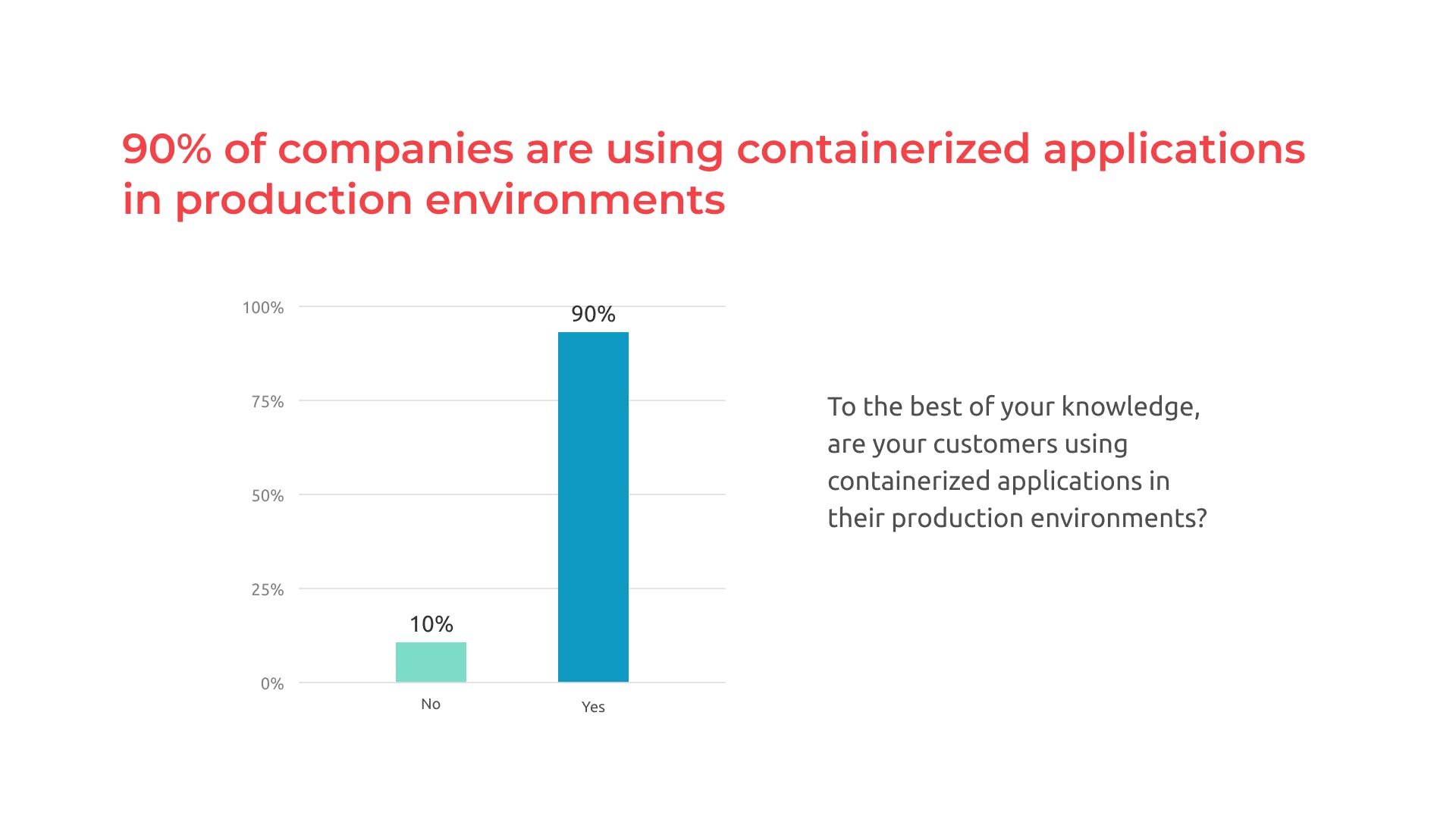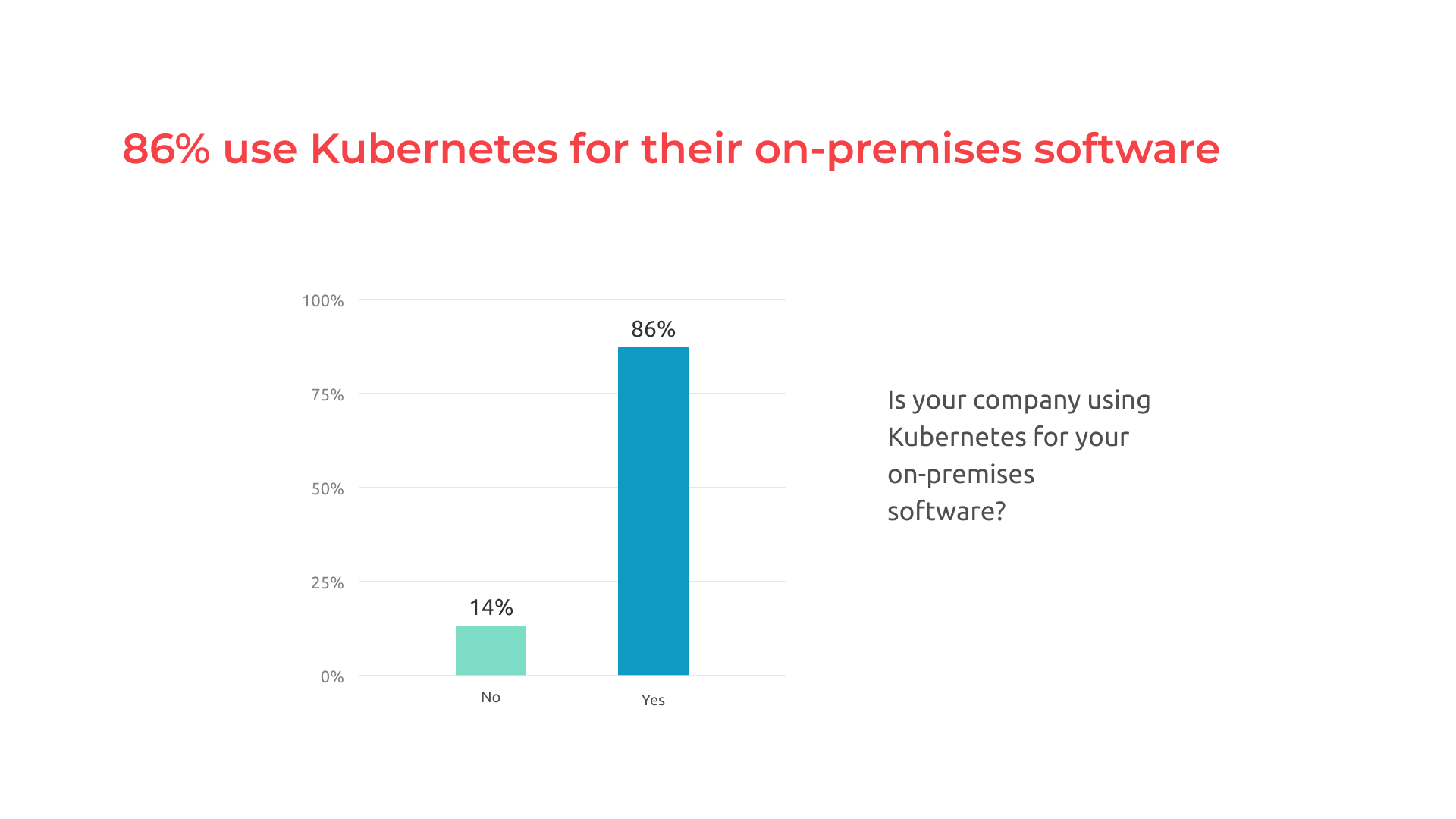With the rapid adoption of on-premises deployments among enterprises, there’s one thing that may come as a surprise: container-based deployments are the norm, and modern enterprise software companies have embraced Kubernetes as the container-orchestration system of choice for their on-premises needs.
In this series, we’ll explore the results of The State of On-Prem: Modern Solutions for a Traditional Problem, a new report from replicated and Dimensional Research.
Looking for Part 1 of this series? Click here.
Skip ahead. Get the entire series now in this free whitepaper.

Part 2: Container–Based Deployments Are the Norm
While it may be popular to believe that “cloud is king” and SaaS is the best and most in-demand modern enterprise software, data shows that demand for on-premises software is equally as strong. It’s the smart choice for customers operating under security, regulatory, and compliance requirements; many organizations cannot allow their customer data to be shared in multi-tenant environments. Additionally, software companies that do not currently provide an on-premises solution to customers leave money on the table and miss a significant business and competitive opportunity.
The recent survey from Dimensional Research includes feedback from 405 business and technology professionals at executive and manager seniority levels, representing software companies of all sizes around the world. The qualified survey participants were asked a series of questions about their company’s software delivery options and use of containers with the goal of better understanding the current use, need, and challenges for on-premises software delivery, as well as investigate the adoption of container-based applications and the use of Kubernetes.
In part two of this series, we’ll look deeper into the responses focusing on containerization and the proliferation of Kubernetes.

One of the primary challenges of on-premises software is managing deployment. Conventional on-prem deployments take months of engineering time and require a significant amount of work. The rise of containerization and Kubernetes, which can help complete deployments in days or even hours, have helped span that gap, and this survey’s results hammer that point home. In fact, a staggering 90 percent of respondents reported that they are using containerized applications in their own production environments.

Sticking with the trend of the previous response, 95 percent of companies reported that they are currently, or planning to, offer containerized versions of their software to customers. The de facto leader of container orchestration systems is unsurprisingly Kubernetes, with 86 percent of survey participants reporting that their companies are utilizing Kubernetes for their on-premises software.
For context, Kubernetes, or K8s, has experienced increased popularity among the developer community over the past few years and has been a widely embraced evolutionary step in application architecture. Reasons for its quick and broad adoption include the move from infrastructure as code (JS, Ruby, Python, etc) to infrastructure as data, specifically YAML, ensuring every resource in K8s (pods, configs, deployment, etc) is expressed in YAML files. Changes like these vastly reduce the time and resources necessary to build and deploy maintainable software and promote best practices for inter-organizational collaboration through processes like GitOps. K8s is also open source, updated 3-4 times a year, and managed by the Cloud Native Computing Foundation (CNCF) to ensure a sustainable, long-term ecosystem.
This report has brought to light several important indicators of the state of on-premises adoption and retention across enterprise software vendors and customers. In the upcoming third entry of this series, we’ll discuss many of the issues that plague modern software companies when it comes to reliably deploying and maintaining software on-prem.
Hate to wait? Download our free whitepaper now to read it all.